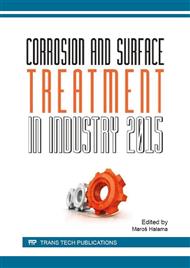p.75
p.79
p.83
p.89
p.97
p.103
p.106
p.115
p.125
Cloud Applications Performance in Crack Growth Simulations of Pre-Hydrogenated Structure Components
Abstract:
The design of durable structure components requires durability analysis in CAE systems and cloud computations use is favorable for batch processing of multiple same-type calculation routines. To develop CAE durability modules analytical approach to different batch processing systems efficiency estimation is necessary. Such modules are intended for durability analysis of pre-hydrogenated and statically loaded structure components with initial defects. Durability estimate is defined as crack growth time elapsed from initial defect state to structure component fracture. Crack kinetics model had been used to simulate a fracture process, required for safe operation of a structure; crack length curves had been obtained and analyzed. The results were verified with the published experimental data on the subject at hand.The authors’ efficiency criterion was applied for performance analysis of the developed cloud application to find a subset of one modelling parameter in which the application is efficient being constrained in number of computational resources available and in the desirable level of performance.
Info:
Periodical:
Pages:
97-102
Citation:
Online since:
March 2016
Keywords:
Price:
Сopyright:
© 2016 Trans Tech Publications Ltd. All Rights Reserved
Share:
Citation:


